Key Takeaways
1. Finding Your Trading Niche: The Foundation of Success
Success reflects the fit between the person and the performance environment.
Identify your strengths. Finding your trading niche is crucial for long-term success. This involves matching your personality, cognitive style, and emotional tendencies with specific markets and trading approaches. For example, some traders thrive on short-term, high-frequency trading, while others excel at long-term, fundamental analysis.
Explore different markets. To find your niche, experiment with various markets (stocks, futures, forex) and trading styles (momentum, value, trend-following). Use paper trading or small positions to gain experience without significant risk. Pay attention to which approaches feel natural and enjoyable, as these are likely to align with your strengths.
Seek multiplier effects. Once you've identified a promising niche, focus on developing expertise in that area. This creates a positive feedback loop where your initial talents lead to early successes, which in turn provide motivation and resources for further improvement.
2. Deliberate Practice: The Path to Trading Expertise
Expertise is skill internalized to the point of habit.
Structured learning. Deliberate practice is the key to developing trading expertise. This involves breaking down complex trading skills into smaller components, setting specific goals for improvement, and receiving immediate feedback on performance.
Immersive experience. Unlike casual practice, deliberate practice requires full engagement and concentration. For traders, this might involve:
- Analyzing historical price data to identify patterns
- Simulating trading scenarios with varying market conditions
- Reviewing and critiquing past trades in detail
- Studying the behavior of successful traders in your niche
Continuous challenge. To continue improving, constantly push beyond your comfort zone. Gradually increase the complexity of your trading strategies, the size of your positions, or the number of markets you monitor simultaneously.
3. The Performance Pyramid: Mechanics, Tactics, and Strategy
Great results come from small improvements that are implemented with consistency.
Trading mechanics. At the base of the performance pyramid are the fundamental skills of trading, such as:
- Order execution
- Risk management
- Position sizing
- Market analysis
Mastering these basics creates a solid foundation for more advanced trading.
Trading tactics. The middle level of the pyramid involves short-term decision making, including:
- Entry and exit timing
- Adapting to changing market conditions
- Managing multiple positions
Effective tactics allow you to capitalize on your strategic insights.
Trading strategy. The top of the pyramid represents your overall approach to the markets, encompassing:
- Long-term market views
- Portfolio construction
- Risk allocation across different trades and asset classes
A well-defined strategy provides a framework for consistent decision-making.
4. Psychological Resilience: Overcoming Trading Challenges
Extreme challenges, once mastered, create extreme confidence.
Emotional control. Trading inevitably involves periods of stress, uncertainty, and loss. Developing psychological resilience is crucial for maintaining consistent performance. This involves:
- Recognizing and managing emotional reactions to market events
- Maintaining discipline in the face of both losses and gains
- Developing a growth mindset that views challenges as opportunities for learning
Cognitive restructuring. Many trading problems stem from faulty thinking patterns. Techniques from cognitive behavioral therapy can help reframe negative thoughts and beliefs about trading, leading to more rational decision-making.
Stress inoculation. Gradually exposing yourself to trading-related stressors in a controlled environment can build resilience. This might involve simulating high-pressure trading scenarios or practicing relaxation techniques during live trading sessions.
5. Trading Metrics: The Science of Self-Improvement
Metrics reveal trading solutions as well as problems.
Data-driven improvement. Collecting and analyzing detailed metrics about your trading performance is essential for identifying strengths, weaknesses, and areas for improvement. Key metrics to track include:
- Win rate and profit factor
- Average win size vs. average loss size
- Performance by market conditions (trending, range-bound, volatile)
- Emotional state during trades
Performance journaling. Maintain a detailed trading journal that goes beyond simple profit and loss figures. Record your thought processes, emotions, and decision-making rationale for each trade.
Regular review. Set aside time for periodic reviews of your trading metrics and journal entries. Look for patterns in your behavior and performance, and use these insights to refine your trading approach.
6. Behavioral Techniques: Rewiring Your Trading Mind
Successful behavior therapy creates experiences of being in control of situations that had formerly been out of control.
Exposure therapy. This technique involves gradually exposing yourself to trading-related stressors in a controlled environment. For example, if you struggle with holding winning trades, practice maintaining positions for longer periods in a simulator before applying the technique to live trading.
Relaxation training. Learn and practice relaxation techniques such as deep breathing, progressive muscle relaxation, or meditation. These can help manage stress and maintain focus during intense market situations.
Cognitive restructuring. Identify and challenge negative thought patterns that interfere with your trading. Replace these with more balanced, realistic thoughts that support your trading goals.
7. The Making of an Expert Trader: A Case Study
Through concentrated market experience, we can accelerate skill development.
Accelerated learning. The case study of Scott Pulcini demonstrates how rapid skill acquisition is possible through intense, focused practice. By trading frequently and in high volume, Scott exposed himself to more market information in a short period than most traders encounter in years.
Leveraging strengths. Scott's success came from identifying and capitalizing on his unique strengths, such as rapid information processing and pattern recognition. This allowed him to develop a trading style that was well-suited to his abilities.
Continuous adaptation. Even after achieving significant success, Scott continued to adapt his trading approach as market conditions changed. This flexibility and commitment to ongoing learning are hallmarks of truly expert traders.
Last updated:
FAQ
What's Enhancing Trader Performance about?
- Focus on Trading Psychology: The book explores how mental states influence trading performance, emphasizing the importance of understanding emotions and cognitive processes.
- Performance Discipline: Trading is likened to athletics or the arts, where success is achieved through deliberate practice and immersion in the craft.
- Learning and Adaptation: It outlines the journey from novice to expert, detailing stages of competence and the role of practice and mentorship in achieving expertise.
Why should I read Enhancing Trader Performance?
- Practical Strategies: Offers proven strategies for improving trading performance, valuable for both novice and experienced traders.
- Psychological Insights: Provides insights into psychological barriers and how to overcome them, crucial for long-term success.
- Real Experiences: Shares real-life examples and case studies, making the content relatable and applicable to readers' own trading experiences.
What are the key takeaways of Enhancing Trader Performance?
- Finding Your Niche: Emphasizes the importance of aligning trading with your personality and strengths for sustained success.
- Deliberative Practice: Highlights the significance of focused, structured learning rather than casual trading.
- Resilience and Adaptability: Discusses the need for resilience in market changes and adapting strategies accordingly.
What is the concept of "learning loops" in Enhancing Trader Performance?
- Cycle of Improvement: Learning loops involve performance, feedback, and adjustment, fostering continuous improvement.
- Deliberative Practice: Effective learning occurs through deliberate practice, internalizing skills and understanding market dynamics.
- Feedback Mechanism: These loops help traders recognize mistakes and learn from them, leading to greater competence.
How does Enhancing Trader Performance define competence in trading?
- Covering Trading Costs: Competence is defined as consistently covering trading costs, including commissions and overheads.
- Skill Development: Involves developing necessary skills to navigate markets effectively and manage risks.
- Foundation for Expertise: Achieving competence is a prerequisite for moving towards expertise, sustaining a living from trading.
What is the difference between first-order and second-order competence in Enhancing Trader Performance?
- First-Order Competence: Ability to make money relying on existing skills and knowledge.
- Second-Order Competence: Ability to adapt and learn new skills in response to changing market conditions.
- Resilience in Trading: Second-order competence fosters resilience, enabling traders to face challenges without losing confidence.
What role does mentorship play in developing trading competence according to Enhancing Trader Performance?
- Guidance and Support: Mentors provide essential guidance, helping traders navigate market complexities and develop skills.
- Structured Learning: Effective mentorship structures learning, breaking down tasks and providing immediate feedback.
- Encouragement of Growth: A good mentor encourages traders to push limits and explore new strategies, fostering growth.
How can traders cultivate resilience according to Enhancing Trader Performance?
- Emotional Awareness: Develop emotional awareness to manage anxiety and frustration in response to market changes.
- Focus on Learning: Emphasize learning from mistakes rather than fearing them to maintain a positive mindset.
- Building Confidence: Resilience is built through repeated exposure to challenges, developing confidence in adaptability.
What is the significance of "deliberative practice" in Enhancing Trader Performance?
- Quality Over Quantity: Focuses on quality of practice, emphasizing structured learning and skill development.
- Immediate Feedback: Involves receiving immediate feedback, crucial for making adjustments and improving performance.
- Path to Expertise: Engaging in deliberative practice fosters deep learning and mastery of trading skills.
What are some practical strategies for cultivating competence in trading according to Enhancing Trader Performance?
- Skill Drilling: Break down trading activities into specific skills and practice them in a structured manner.
- Simulated Trading: Use simulation tools to practice in realistic conditions without risking real money.
- Setting Clear Goals: Establish clear, achievable goals for each practice session to maintain focus and motivation.
How does Enhancing Trader Performance address emotional disruptions in trading?
- Identifying Triggers: Recognize emotional triggers that lead to poor decisions and develop strategies to manage responses.
- Behavioral Techniques: Introduces techniques like relaxation training to cope with anxiety and stress.
- Moderate Trauma Concept: Understanding emotional responses to significant market events helps manage performance impact.
How does Enhancing Trader Performance suggest traders can manage risk effectively?
- Risk Management Strategies: Implement sound strategies like setting stop-loss levels and appropriate position sizing.
- Emotional Awareness: Be aware of emotional states when making decisions to mitigate risk.
- Gradual Exposure: Gradually increase trading size and exposure to build confidence without overwhelming oneself.
Review Summary
Enhancing Trader Performance is highly praised for its deep insights into trading psychology and performance improvement. Readers appreciate its focus on self-awareness, skill development, and finding one's trading niche. The book is described as sobering yet inspiring, emphasizing the hard work required for success. Many consider it essential reading for aspiring traders, offering valuable exercises and analogies to sports training. Reviewers highlight its applicability beyond trading, noting its relevance to decision-making and personal growth in various fields. Overall, it's regarded as a comprehensive course in trading and performance psychology.
Similar Books



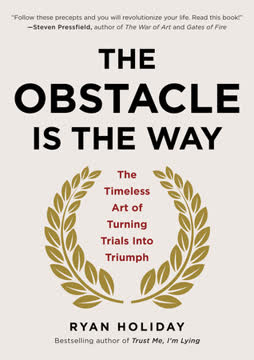
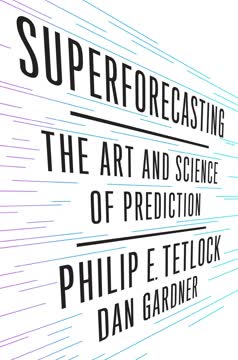
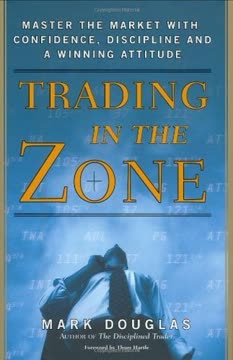

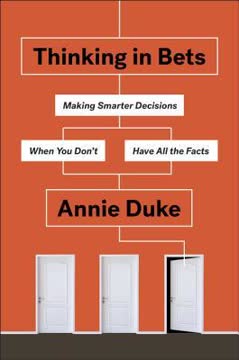
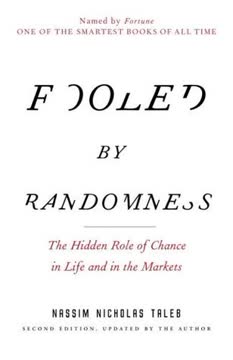

Download PDF
Download EPUB
.epub digital book format is ideal for reading ebooks on phones, tablets, and e-readers.







